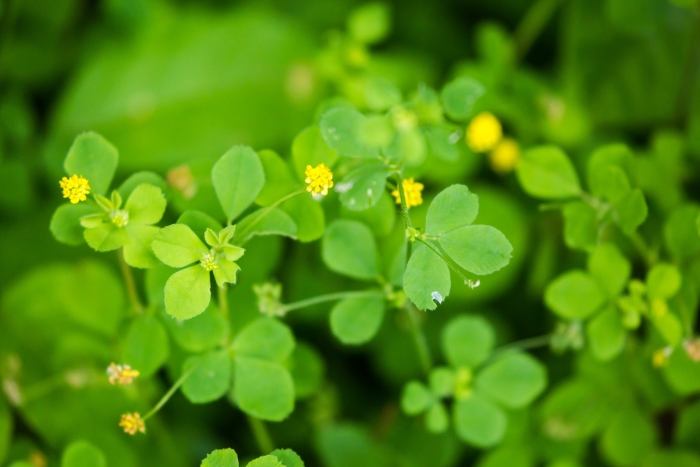Black Medick
(Medicago lupulina)
Black Medick (Medicago lupulina)
/
/

Melissa McMasters
CC BY 4.0












































Estimated Native Range
Summary
Black Medick thrives in a range of soil pH levels, from alkaline to mildly acidic, and prefers open, sunny locations but can tolerate part shade. It is often found in meadows, pastures, and lawns, where it can be used as a ground cover or forage plant. It requires medium amounts of water and well-drained soils. While it is not particularly demanding, it can become weedy and potentially invasive outside its native range, so caution is advised when planting it in non-native areas.CC BY-SA 4.0
Plant Description
- Plant Type: Herb
- Height: 0.5-2 feet
- Width: 0.5-1 feet
- Growth Rate: Moderate
- Flower Color: Yellow
- Flowering Season: Spring, Summer
- Leaf Retention: Deciduous
Growth Requirements
- Sun: Part Shade, Full Sun
- Water: Medium
- Drainage: Medium, Fast
Common Uses
Bank Stabilization, Bee Garden, Butterfly Garden, Edible*Disclaimer: Easyscape's listed plant edibility is for informational use. Always verify the safety and proper identification of any plant before consumption., Low Maintenance, Potted Plant
Natural Habitat
native to Europe, Western Asia and Tropical Africa, but it has naturalized in many parts of the world, including grasslands, roadsides, and disturbed areas
Other Names
Common Names: English Trefoil, Nonesuch, Hop Trefoil, Hop-Clover, Black Medic, Yellow Trefoil, Black Medic Clover, Hop Clover, Hop Medic, Fenarola Menuda
Scientific Names: , Medicago lupulina, Medicago lupulina var. glandulosa, Medicago lupulina var. glanduligera, Medicago lupulina subsp. lupulina, Medicago lupulina var. willdenowiana, Medica lupulina, Medicago cupaniana, Medicago apennina, Medicago lupulina var. unguiculata
GBIF Accepted Name: Medicago lupulina L.